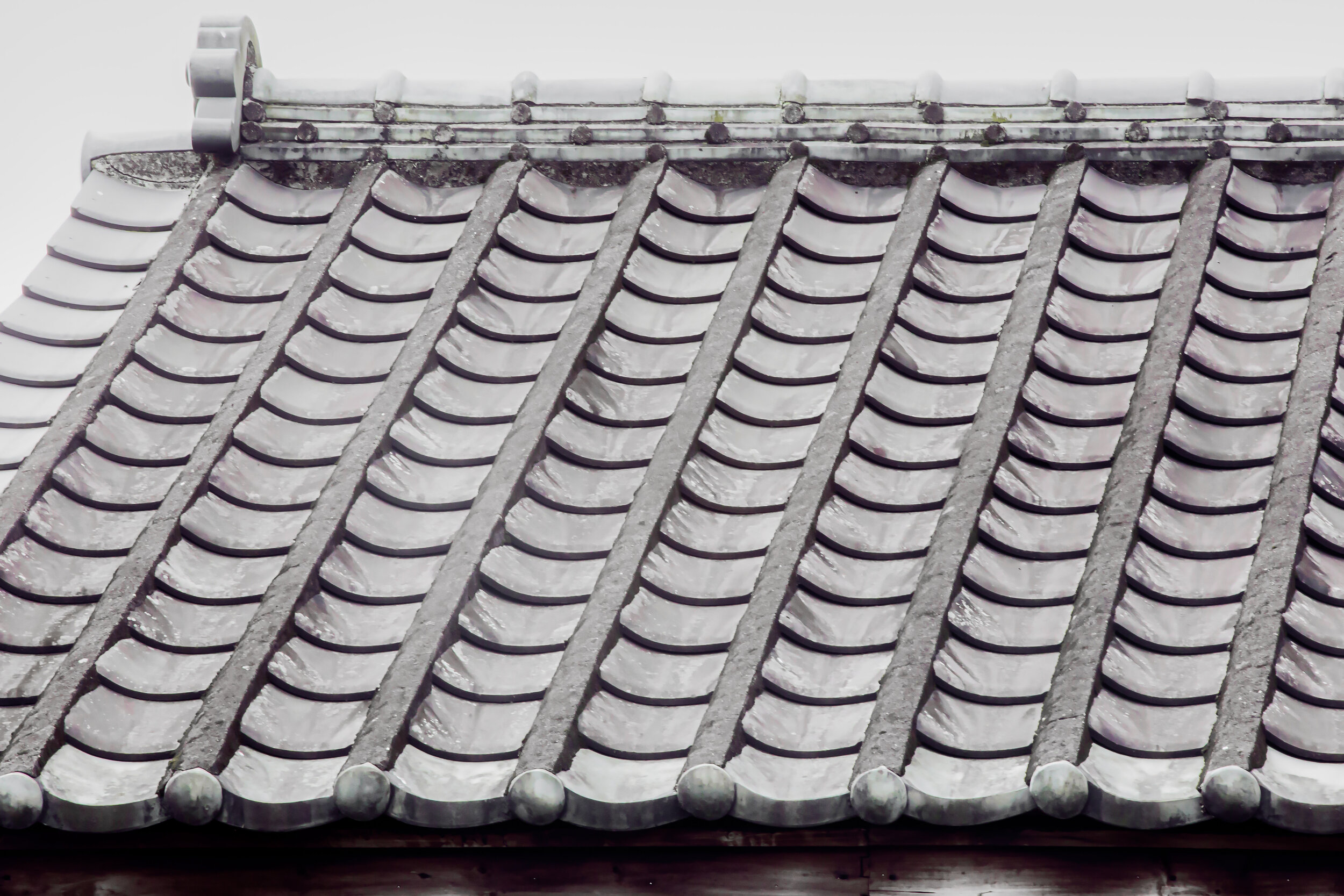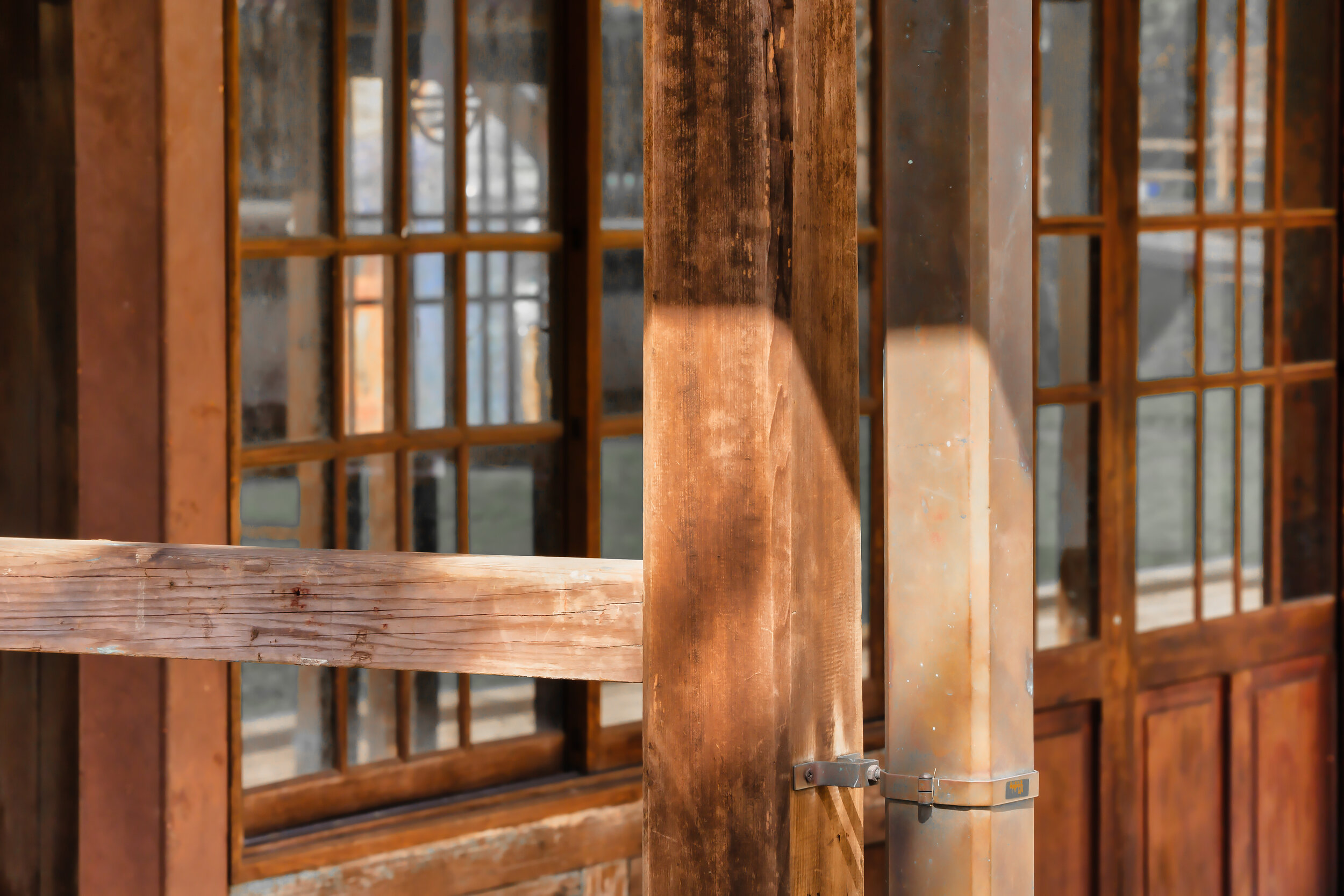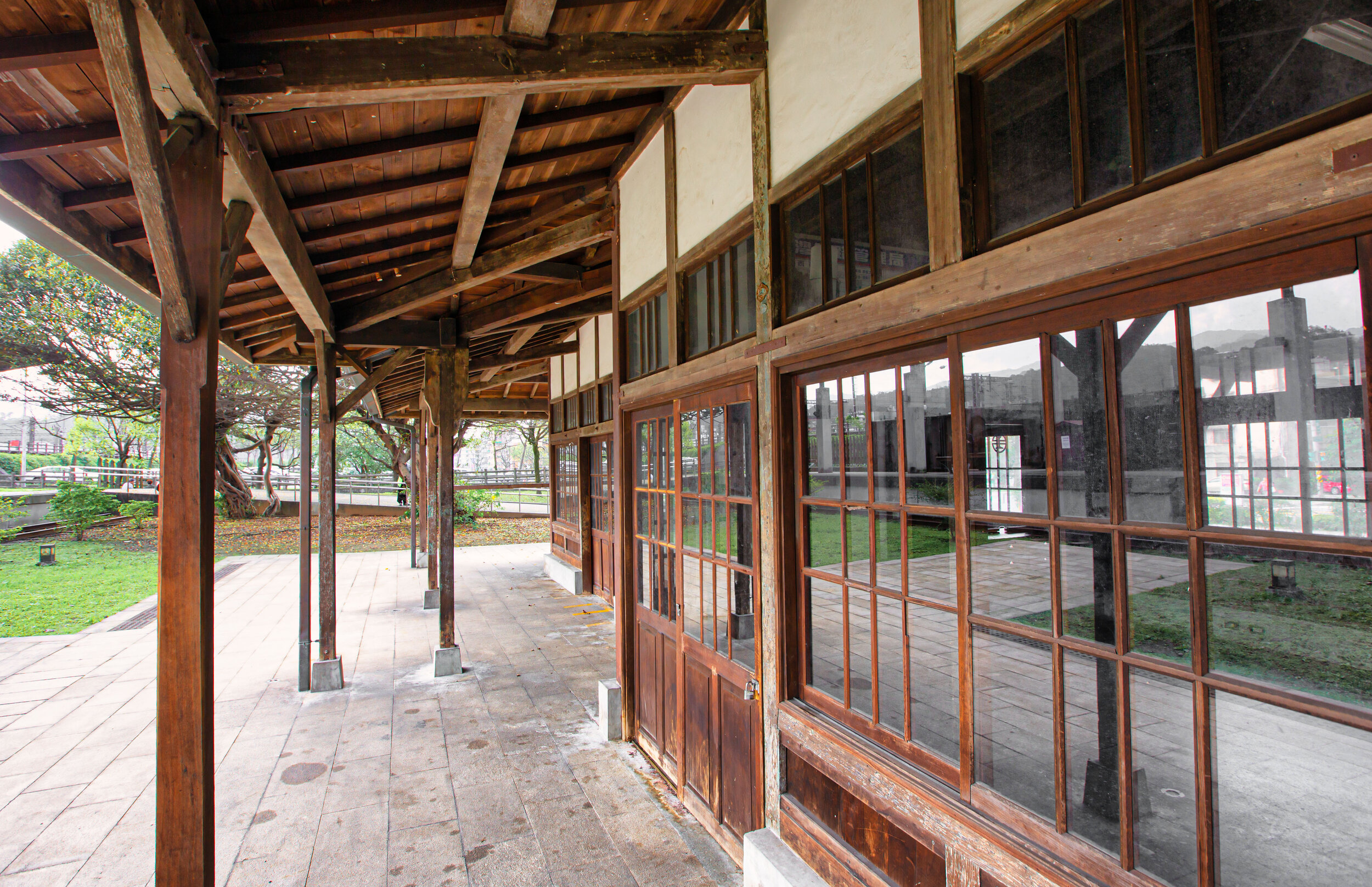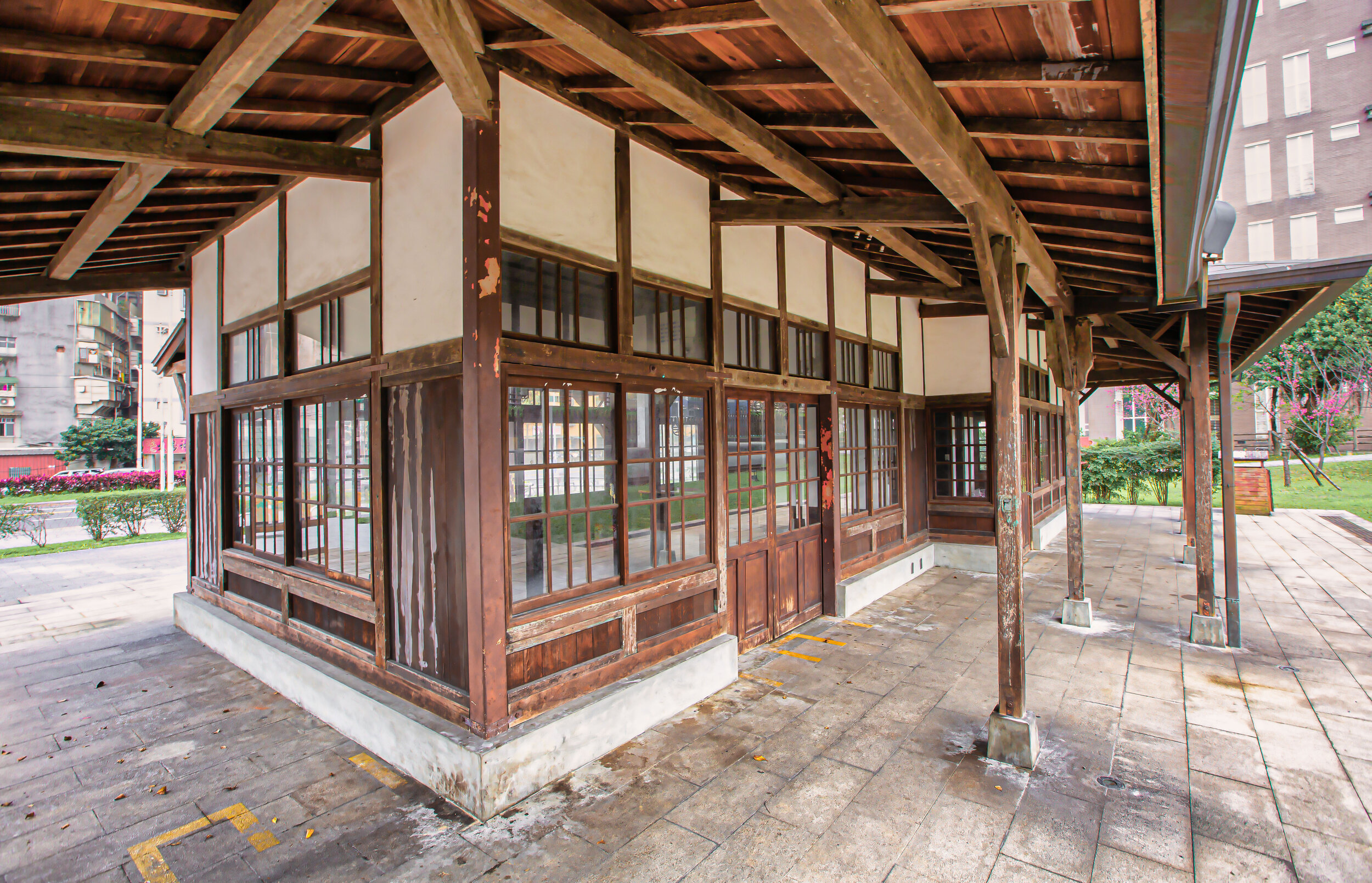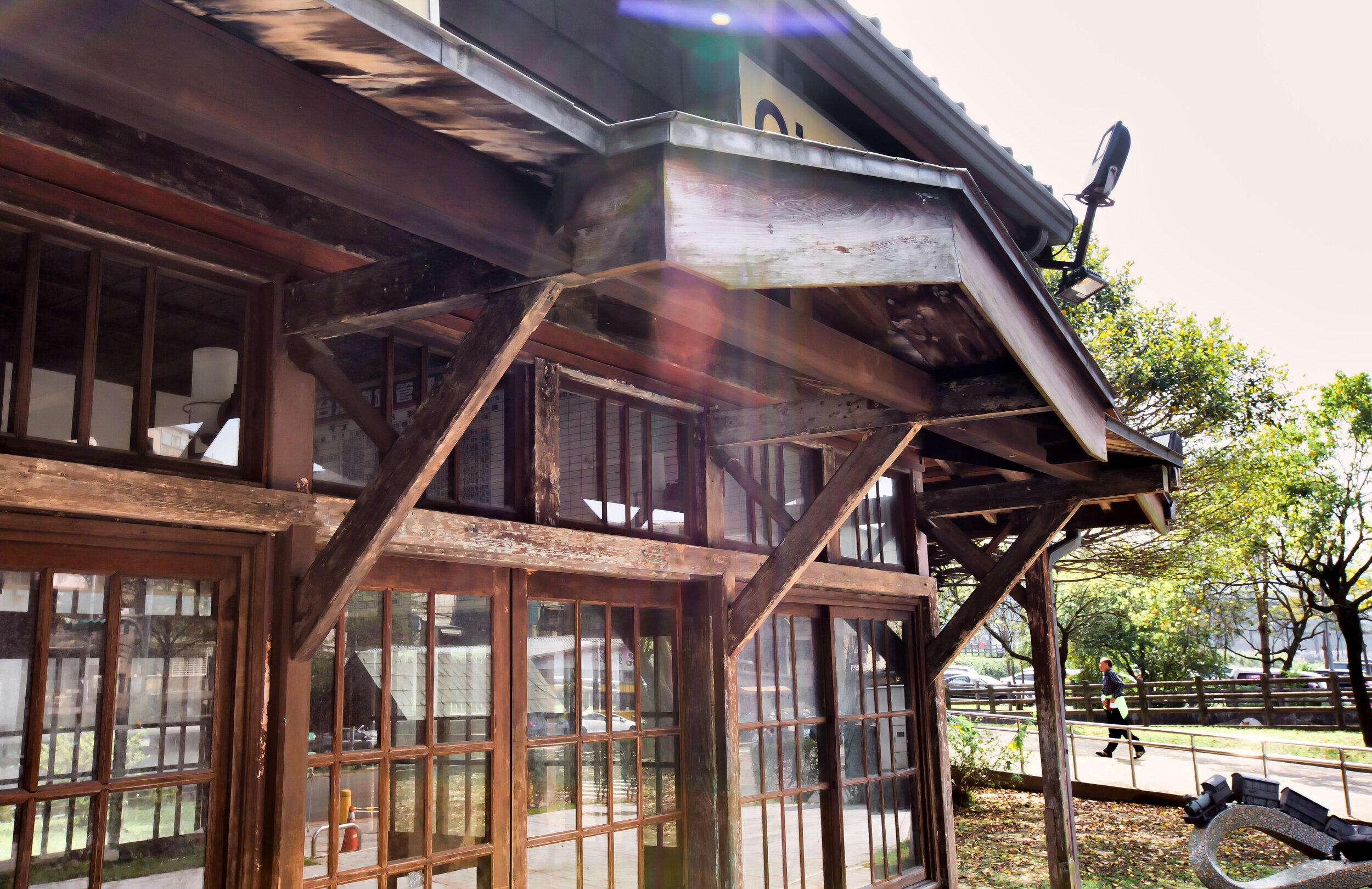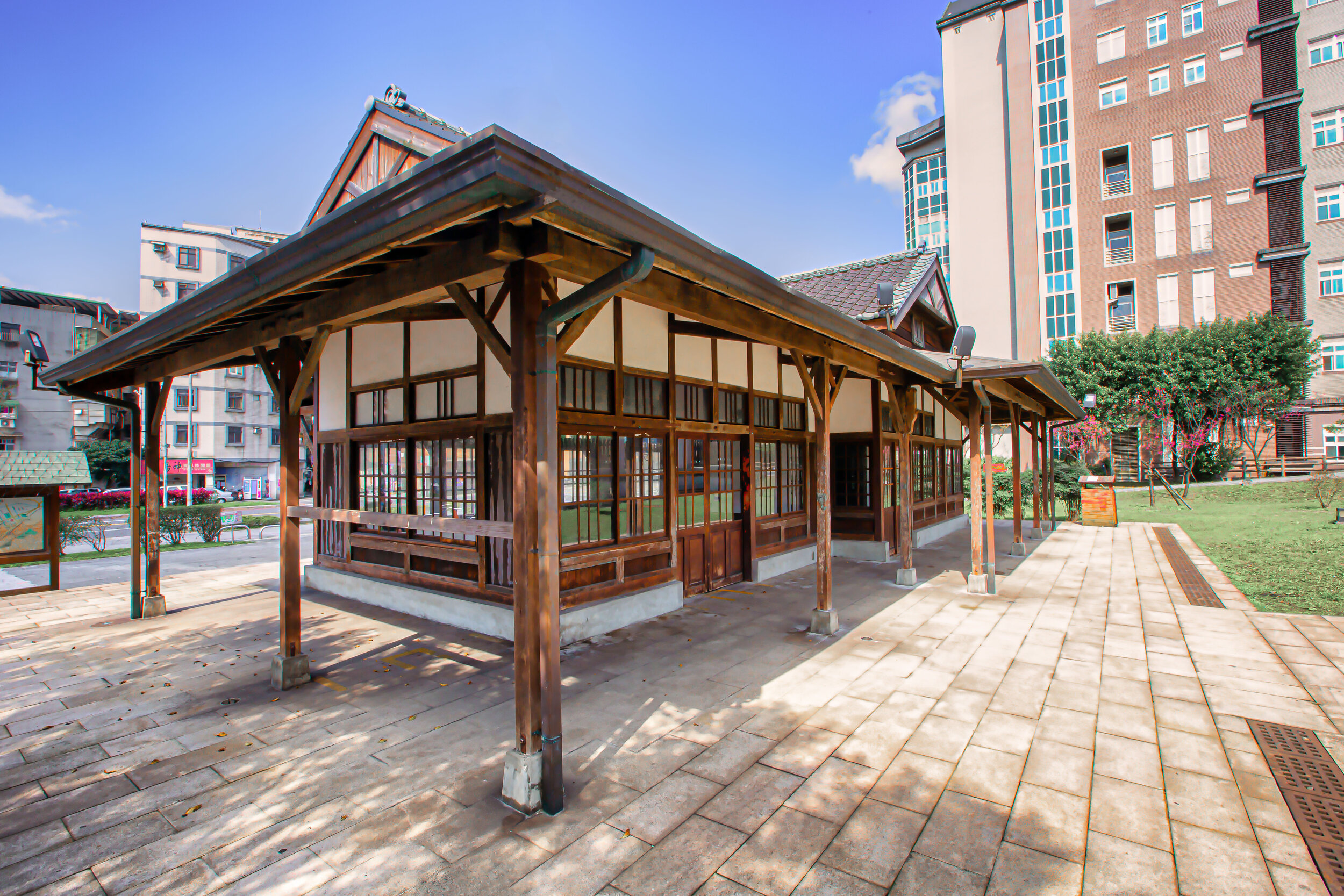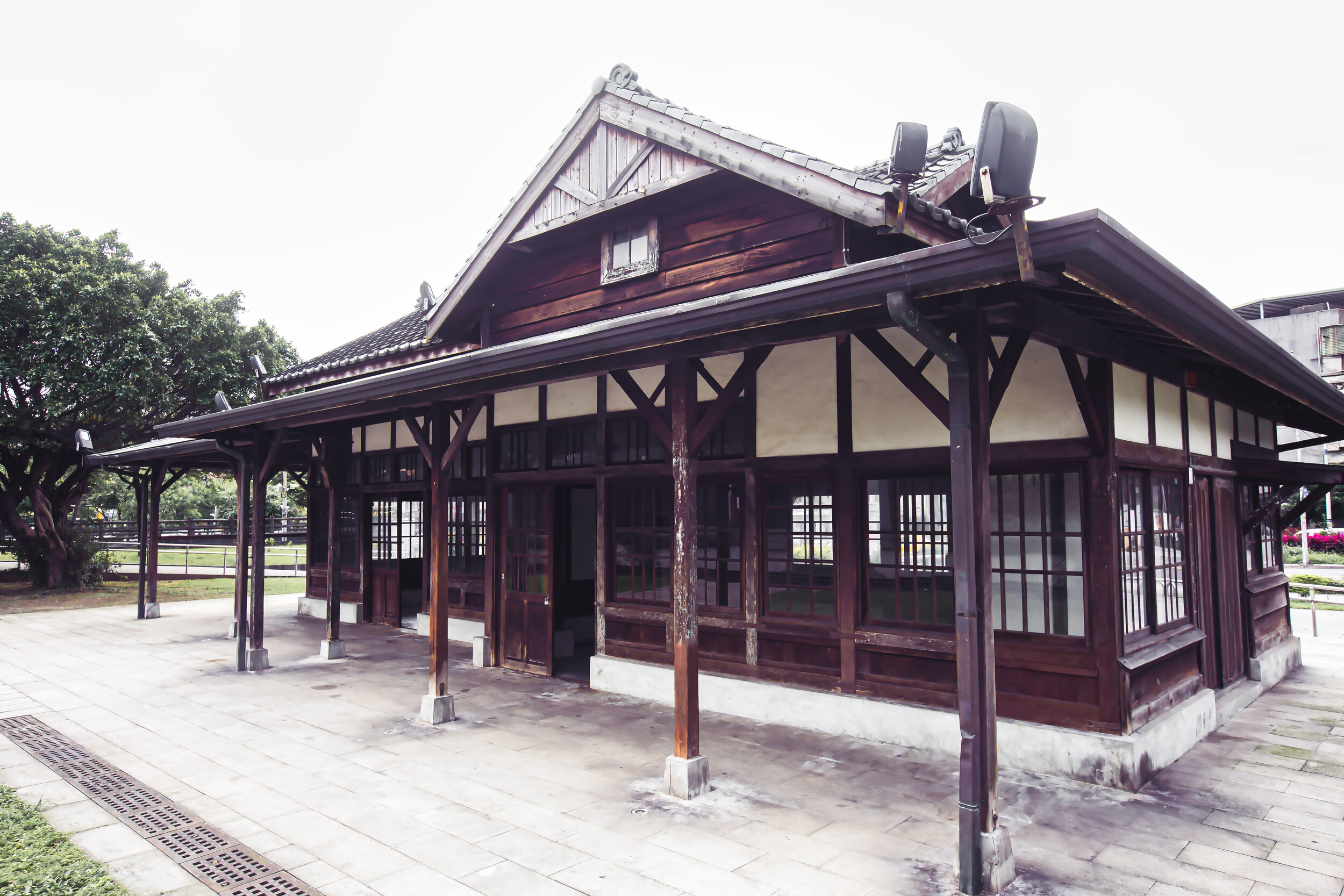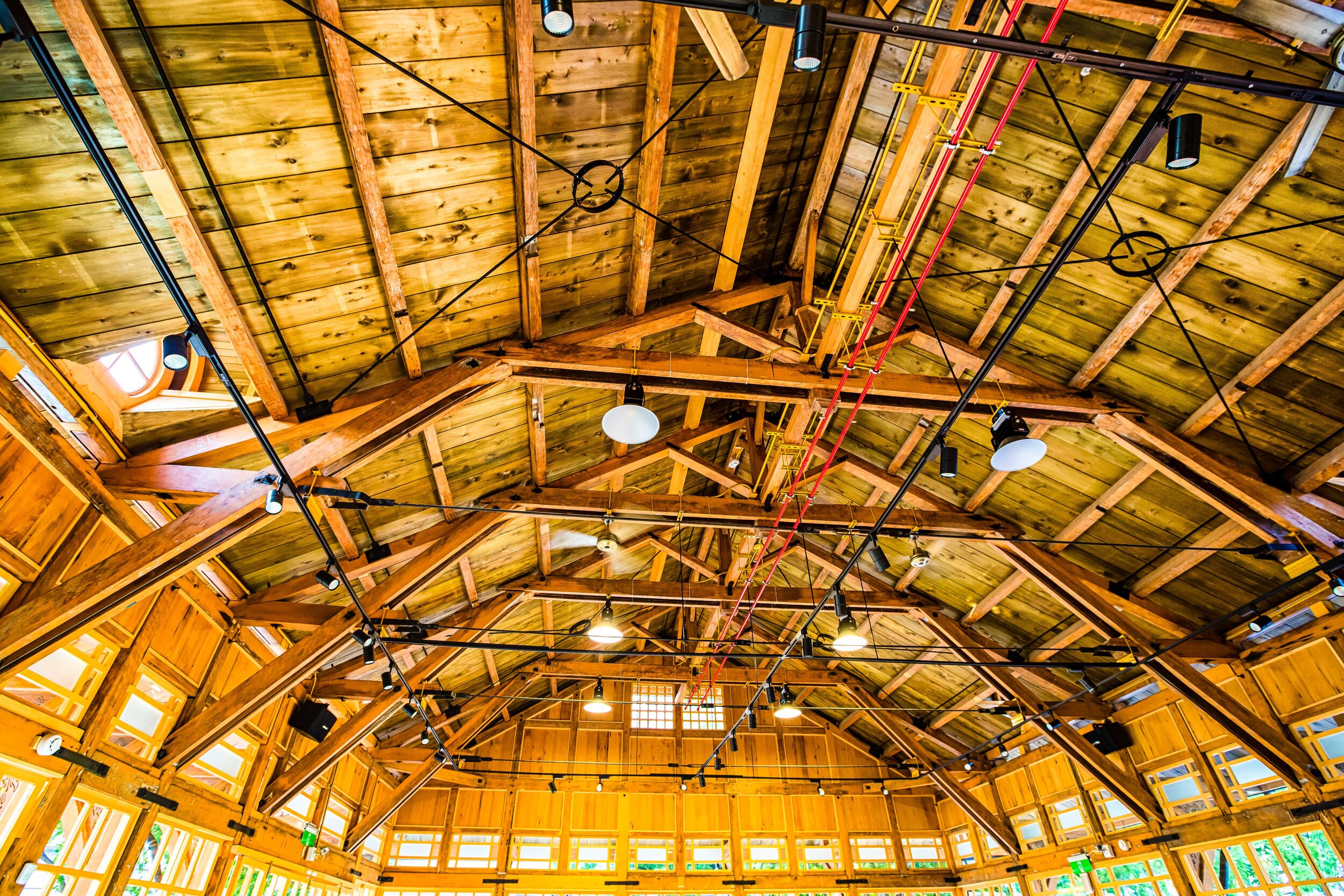Amazingly, despite all of the high-tech industry and modern development in Taiwan, most people are relatively surprised when they discover that the country actually remains home to dozens of train stations that date back more than a century. Those living in Taipei have an especially difficult time believing this as their city is home to modern High Speed Rail, train and Metro Stations, all of which are less than a few decades old, sharing one common feature - they’re all underground.
The further you travel outside of the capital however, you’ll find that these historic train stations, often located in the downtown core, have been an important part of the community for a hundred years, and if its not broken, why fix it? Almost without exception, each of these century-year old stations dates back to the five-decade long Japanese Colonial Era from 1895 to 1945 and has been able to stand the test of time, enduring decades of earthquakes, typhoons, regime change, and of course the nationwide push for modern development.
There are probably few countries in the world where the railway is as relevant, popular, or as widely used as it is here in Taiwan - the perpetual march towards modernization however has left the status of quite a few of the nations historic stations in limbo, given that they are either too old or no longer fit the needs of the ever changing railway and a much larger population.
So even though the old adage about the railway station being the beating heart of many of Taiwan’s smaller communities remains true, the vast majority of smaller Japanese-era stations have already been replaced with modern buildings. Making matters worse, the handful that remain today are often in dire need of restoration, which can be as expensive as simply tearing it down and building a new one.
For example, it was recently announced that an NT$82,000,000 (3 million USD) restoration project will start in the near future to restore several stations along the Miaoli coast including Xinpu Station (新埔車站), Baishatun Station (白沙屯車站), Tongxiao Station (通宵車站) and Yuanli Station (苑裡車站)
Link: 8200萬元補助挹注 苗栗縣推百年鐵道旅行 (UDN)
Fortunately, Taiwan is currently going through somewhat of a renaissance when it comes to the appreciation of buildings of historic and cultural value, and given the railway is something that near and dear to almost everyone’s heart, these older stations have started to receive a lot more appreciation for their historic and cultural value.
Hsinchu’s Xiangshan Station (香山車站) was recently restored to its original condition and was a project that likewise modernized the railway line and the platforms so that the station can remain in operation for the foreseeable future.
With Xiangshan Station, as well as the stations mentioned above, we have examples of those that are restored and remain in operation. What happens though when historic stations are preserved, but cease operations? Well, as in the case of larger stations like those in Kaohsiung and Taichung, we are still able to continue enjoying them in different ways with the creation of culture parks, which have become popular tourist attractions.
Where larger stations are being converted into popular tourist attractions, smaller stations like the Xinbeitou Station in Taipei and Qidu Railway Station near Keelung in Northern Taiwan have become mini railway culture parks, allowing people to enjoy the historic station while learning about the area at the same time.
Albeit in a much quieter setting than the two mentioned above.
One might argue that those larger stations in cities such as Kaohsiung are able to be easily converted into popular tourist attractions, but I’m sure that if you ask most people, the nostalgic feeling that you get when visit one of these smaller wooden stations brings you back to a time when Taiwan was much different than it is today.
For people in Taiwan today, looking back at this nation’s complicated history is an important step in retracing ones roots, and the existence of these buildings is one of the methods that is helping form a national identity, which is something that has been discouraged and violently suppressed for so long. Taiwan’s history over the past few centuries might be considered by some to be rather depressing, but there is ultimately a need to learn more about it and since train stations were the beating-heart of any community, they’re a pretty good place to start!
Today I’ll be introducing the historic Qidu Station as part of my on-going project covering Japanese-era stations, including those that are still in operation as well as those that have been converted into tourist attractions. While this one might be part of the latter, it has been beautifully restored and is geographically speaking one of the most important stations in northern Taiwan.
A quick note before I start - I had originally planned on publishing this article much sooner, but given the tragic railway disaster that took place during the annual Tomb Sweeping Festival long weekend, I held off.
Link: 2021 Hualien Train Derailment (Wiki)
Given that the tragic crash had affected so many families across the country, I felt like sharing an article celebrating the history of Taiwan’s Railway would have been in bad taste. That being said, Taiwan’s railways have been running since the late 1800s and the list of accidents throughout that period is a pretty short one. No matter what the local media might say in a fit of rage, Taiwan’s trains are still, and have always been the safest and most convenient way to travel around this beautiful country.
We mourn the loss of all the people who lost their lives or their loved ones, but we should also continue to show our appreciation for all the good people who work for the TRA!
Historic Qidu Train Station (舊七堵駅 / しちとえき)
Currently one of Northern Taiwan’s most important Railway Stations, the newly constructed Qidu Station (七賭火車站), located in Keelung’s Qidu District opened to the public in 2013 (民國102年).
Serving approximately four and a half million passengers each year, the station’s importance isn’t in the amount of people that pass through its gates, but due to the fact that it is the ‘origin’ station for the most of the trains that travel south along the West Coast Trunkline (西部幹線).
While the new station is large and modern, the history of “Qidu Station” goes all the way back to the early days of Taiwan’s railway network, when construction on a railway between Keelung and Taipei started in the late 1800s.
The original plan was to construct a railway between Keelung and Tainan, but due to the outbreak of the Sino-Japanese War, the Qing (who ruled parts of Taiwan at the time) quickly ran out of funds and lost interest in continuing its construction. In total, they completed around 106 kilometres of track between Keelung (基隆) and Hsinchu (新竹).
As I’ve mentioned numerous times already here on my blog, when the Japanese took control of Taiwan in 1895, things quickly changed and the railway became an extremely important tool for the colonial government’s desires for their newfound colony. The Japanese saw the construction of an island-wide railway network as instrumental in their plans for the development of the island, but more importantly for the extraction of its precious natural resources.
Railway Links: Taipei Railway Bureau | Taipei Railway Workshop | Xinbeitou Historic Train Station
Upon their arrival in Taiwan, in order to slow the advance on Taipei, the Qing had portions of the railway between Keelung and Taipei sabotaged thinking that it would give them more time to escape. Ultimately though, it didn’t really have much effect as had made all the necessary repairs to the railway within two months of their arrival.
Bringing with them a team of military engineers, the emergency reparations put it the railway back in service and provided the military with the ability to quickly transport supplies from the port in Keelung to the capital.
Nearing the end of 1895 (明治28年), the Japanese stationed the Temporary Taiwan Railway Team (臨時臺灣鐵道隊) in Keelung to carry out repairs on the existing railway, conduct surveys of the railroad, and to come up with plans for improvements.
By 1896 (明治29年), proposals were drawn up to completely re-route the rail line in another direction for better efficiency, but in the meantime the railway was put back in business for passenger service between the cities.
Interestingly, by 1896 there were four round trips between Keelung and Hsinchu held each day. Today, there are at least fifty trains leaving Keelung for Hsinchu each day, and vice versa.
This is where the history becomes a little confusing.
In 1897 (明治30年), a “station” was constructed on the site of where the current station is located.
Its original name was Badu Station (八堵車站), but would be relocated in 1899 (明治32年) when another station was constructed in nearby Badu (八堵臨時車站), resulting in this station being renamed Qidu Station (七堵車站).
Admittedly, every time I’ve passed through this area on the train, I’ve wondered about the origin of the names “Qidu” (七堵) and “Badu” (八堵), but until now never really bothered to find out. So, if you’re like me and often wondered where the names came from, I did a little research for the benefit of all of us!
One of the meanings of the word “堵” (du) is “wall” or “barrier” and each of the areas that exist today “Wudu” (五堵), “Qidu” (七堵), “Badu” (八堵) derive their names from artificial ‘barriers’ that were set up along the Keelung River (基隆河).
This was part of an attempt to prevent the Pingpu (平埔族) and the Ketagalan (凱達格蘭族) Indigenous groups from being able to successfully conduct raids on Han Chinese communities, and then retreating into the mountains through the river valley.
So “Wudu”, “Qidu” and “Badu” quite literally translate to “Fifth Barrier”, “Seventh Barrier” and “Eighth Barrier”, although I’m not particularly sure they were ever very effective in preventing attacks.
Nevertheless, the communities that popped up around them as the Han Chinese ventured further out of the Taipei Basin in the mid to late 1800s retain their names today.
When I mentioned the history was a bit confusing above, what I meant was that the area where “Qidu Station” is located was originally the home of “Badu Station”, which is currently about two and a half kilometres away. The Japanese are renowned for their attention to detail, so its odd that the stations were mis-named like this.
Nevertheless, passenger service at the “Qidu Railway Station” officially started in 1899, even though the station itself dated back a couple of years prior to the name change.
The historic building that we’re taking a look at today however wasn’t constructed until years later.
In what became a pretty important year for construction projects around Taiwan, the first year of the Taisho Era (大正元年), more commonly known as 1912, became one where the colonial government invested heavily on refurbishing some of the buildings that were hastily constructed upon arrival on the island. Qidu Station was one of the buildings that was reconstructed during this important year, replacing the original station with a beautifully constructed Japanese-Western fusion building.
Over the next few decades, not much really changed at the station, but as control of Taiwan passed from one colonial power to another, the Taiwan Railways Administration (臺灣鐵路管理局) of the Republic of China started an expansion of the railway in the Qidu area creating the Qidu Marshaling Yard (七堵調車長) in 1968 (民國57年).
This project expanded the width of the railway track considerably and forced the railway authorities to construct a Rear Station (後站) on the other side of the tracks. This created a precarious situation for passengers wanting to get on the train at Qidu as the ‘Front’ and ‘Rear’ sections were separated by a long walk in addition to the trains that they serviced.
By 1972, the original Japanese-era station became known as the “Front Station” (前站) and only serviced those who were traveling northbound to Keelung (基隆), while the newly constructed “Rear Station” serviced those who were on express trains headed to the east coast.
The situation at the station became even stranger in the 1990s when the Rear Station was upgraded to a Class A Station (一等站), while the Front Section was classified as a Simple Platform Station (簡易站); Having a single Railway Station with two different classifications is a rather unique case here in Taiwan.
Then in 1995, the Taiwan Railway Administration renovated the historic station, similar to the renovations that took place on the Xiangshan Station (香山車站) in Hsinchu in that they more or less covered up the exterior design of the building which pretty much covered up the original design, making it like one of the ‘tin house’ (鐵皮屋) extensions you commonly find constructed on top of a building in Taiwan.
The Japanese-era “Front Station” ultimately remained in service until 2007, when after ninety-five years of use, it was finally ‘retired’ when the front and rear stations were combined into a much larger station a short distance away.
If you’ve been to the ‘modern’ Qidu Station, you’ll probably not really take too much away from your experience as it is lifeless in its architectural design. It is essentially a giant concrete box.
Finally in 2010, the building was classified by the Keelung City Government’s Cultural Affairs Bureau (基隆市文化局) as a historic building (歷史建築) and was given protected status. The station then underwent a period of restoration where it was restored to its original design, and was subsequently opened as a tourist attraction within the Qidu Railway Memorial Park (七堵鐵道公園).
Today the more than a century old Qidu railway station sits within the modest park and is open to the public.
Even though there’s not much else to see or do in Qidu, stopping by to check out the station doesn’t take a whole lot of time, especially if you’re on your way for a day-trip to Keelung.
Now, lets talk a bit about the design of the station, which is quite special given its architectural fusion.
Design (設計)
Having been recently restored to its original design, the historic Qidu Railway Station is now part of a railway park meant to help tell the story of one of northern Taiwan’s most significant stations. Given its history and its strategic location between Taipei and Keelung, it has acted as one of the gateways to the east coast and was home to a Marshaling Yard. So even though it is a small station by todays standards, it has still seen its fair share of activity over the last century!
Constructed primarily with Taiwanese cedar, the old station is an architectural fusion of a traditional Japanese-style building with western elements carefully mixed in. Differing slightly from many of its contemporaries, the construction of this building made use of not only locally sourced cedar, but also concrete and steel, using modern construction techniques to ensure a long life.
Official literature about the station states that the design imitates the architectural styles of “Ancient Greece and Rome” with elements of “Gothic Architecture” (模仿古希臘與古羅馬樣式,也模仿哥德式建築). While I don’t doubt that some of this may be true, the inclusion of anything appearing even remotely inspired by Gothic architecture doesn’t really pop out at you like it should. My best guess with what they were trying to say was that the design of the building takes inspiration from elements of Baroque-style design (巴洛克建築), a European architectural design that the Japanese architects of the era had become quite proficient in, especially when fusing it with their own traditional architectural design.
If thats the case, it is easy to see from the exterior that the almost 3D-like shapes and the sense of flowing movement creates the sense of drama that Bernini mastered back in Italy. That being said, the Japanese-style design elements are probably the most obvious to anyone looking at the station today.
The station was constructed using Irimoya-zukuri (入母屋造 / いりもやづくり) style of design, most often referred to in English as the “East Asian hip-and-gable roof.”
The key thing to keep in mind about irimoya-style design is that it doesn’t necessarily dictate what kind of roof is constructed on any given building - Granted, buildings constructed in this style feature a hip-and-gable roof - but within traditional Japanese architecture, there are several different styles of roof design and while some of them go hand-in-hand with the irimoya design, its probably better to first take a look at the ‘moya’ (母屋) part of “irimoya”, which describes the core of the building, under the roof.
In layman’s terms, the ‘moya’ is essentially the base of the building, and when the irimoya-style is used, the ‘moya’, (literally the “mother-house”) is almost always considerably smaller than the roof, which extends well beyond the base. When we talk about irimoya design, we should keep in mind that the base of the building has been especially constructed to ensure that the weight of (whatever style of) the roof above is going to be well-supported and that it will be evenly distributed to ensure that the building doesn’t collapse.
To put it simply, in buildings like this, the roof is always the main attraction. The base is just there to hold it up.
To achieve this even distribution of weight, Japanese design uses an expertly crafted network of roof trusses and pillars on the interior and exterior of the building that allow the roof to become the most important part of the building, which is something that they’ve perfected over a period of a thousand or so years.
So in this case, even though we have an ‘irimoya-zukuri-style’ building, the roof was designed using the kirizuma-zukuri (妻造的樣式) style, which is one of the oldest and most commonly used designs in Japan. Translated simply as a “cut-out gable” roof, the kirizuma-style is one of the simplest of Japan’s hip-and-gable roofs and is indicative of a roof with “two surfaces including from the ridge at the top, or having the shape of a book placed with its face on its lower side” - and is probably one of the main reasons why the roof on this building so so much different than what you’d expect from a temple or shrine.
Looking at the roof, you’ll notice that it is layered with the eaves on the lower layer extending beyond the building, supported by a network of pillars that surround it on three sides. The top layer is where you’ll find the ”cut-out gable” with the gable-section of the roof covering the eastern side of the building, while the longer hipped side cuts through it.
Both of the ends of the ‘hip’ section feature triangular-shaped “hafu” (破風板) bargeboards, while either side of the gable features “tsuma” (妻) or gable-ends, with windows placed in the middle that allow natural light into the interior of the building.
Even though the roof of this particular building appears rather simple compared to some of the other historic Japanese-era buildings in Taiwan, there is still actually quite a bit going on.
The first thing you’ll probably notice is that it is covered almost entirely with Japanese-style black tiles (日式黑瓦) with wooden rain-boards (雨淋板) on the lower areas.
Likewise you’ll find the following smaller parts working together to complete the roof:
Hiragawara (平瓦 /ひらがわら) - A type of arc-shaped clay roofing tile.
Munagawara (棟瓦 /むねがわら) - Ridge tiles used to cover the apex of the roof.
Onigawara (鬼瓦/おにがわら) - Decorative roof tiles found at the ends of a main ridge.
Nokigawara (軒瓦/のきがわら) - The roof tiles placed along the eaves lines.
Noshigawara (熨斗瓦/のしがわら) - Thick rectangular tiles located under ridge tiles.
Sodegawara (袖瓦/そでがわら) - Cylindrical sleeve tiles.
Tsuma (妻/つま) - The triangular shaped parts of the gable on the roof under the ridge.
Hafu (破風板/ はふいた) - Bargeboards that lay flat against the ridge ends to finish the gable.
The ‘moya’ or the base of the building is constructed in a cube-like shape that is split in two, one side for passengers who walk through the station hall and the other for the employees of the station.
Like the lower part of the roof, the exterior is covered in wooden rain-boards, but for the most part, the building is covered almost entirely on each of its sides with beautiful Japanese-style paneled sliding glass windows (日式橫拉窗), which provide a considerable amount of natural light into the interior.
The interior (which is currently only open to the public during the week) has been pretty much gutted, and for the most part doesn’t really have all that much for visitors to see.
The partition between the ‘Station Hall’ and the ‘Staff Section’ still exists, with the glass window ticket booth, but the door between them has been opened up and allows guests to easily pass through to the other side.
The great thing about the building being so empty is that (unlike many of the other Japanese era buildings that have been restored) you are able to better appreciate the architectural design of the interior without a bunch of pointless distractions getting in the way.
When you look up at the ceiling, you’re able to view an open space where you the network of beams and trusses that keep the roof in place. The recent restoration project made sure to leave a large space open that gives tourists the ability to appreciate the skills that went into constructing the building. The sad thing is that the restoration project added some steel beams for extra stability, which takes away from the original design.
As the historic railway station is currently part of a Railway Park, you’ll find an old platform placed to the rear of the building that features part of a railway track.
Initially, I thought these were just put there for the purpose of the park, but they are actually part of the original station. The reason I thought this was because the rear of the station has an embankment that you can climb up to where the Marshaling Yard, and where the current tracks are located.
Essentially, the track that you’ll see behind the station today is where the original track was once located, but as I mentioned above when the “front station” and the “rear station” were separated, the railway was as well.
Check out some of the historic photos in the link below that show the last day of operation at the historic station and how it looked back then.
Link: 七堵前站營業最終日追憶
What surprises me about the design of the station, the railway and its platform is that passengers would have actually had to cross the railway tracks to get to the train platform - This is something almost unheard of in Taiwan these days and was probably one of the reasons that a change ultimately had to be made!
Getting There
Address: No. 23, Guangming Road, Qidu District, Keelung City (基隆市七堵區光明路23號)
GPS: 25.093050 121.710920
It should go without saying that the Qidu Railway Memorial Park is a short distance from the current Qidu Station. If you’re planning on visiting the park, the best way to get there would be to simply take the train, get off at Qidu and then walk the short distance to the park.
Qidu Station is currently one of the largest ‘Class A’ stations in northern Taiwan featuring four platforms and services the slower local trains (區間車), as well as the Puyuma (普悠瑪號), Taroko (太魯閣號), Zi-Qiang (自強號) and Chu-Guang (莒光號) express trains.
Given its size and its location, it has become the origin station for most of the southern-bound trains on the West Coast Line (西部幹線).
If you are traveling northbound from Taipei, you can simply hop on any of the trains listed above and it will stop at Qidu Station. Likewise, if you’re traveling from Keelung or the East Coast, any train headed south or west respectively will get you to the station.
Car / Scooter
If you’re driving a car or a scooter, I recommend inputting the address or the GPS coordinates provided above into your preferred geolocation system, and it will map out your route.
If you’re riding a scooter, parking along the street near the park should be relatively easy. However if you’re driving a car, you’re going to be forced to park in one of the paid parking lots near the station.
Given the amount of parking lots in the area though, you shouldn’t have any problem finding a spot.
On either side of the memorial park you’ll find Guang-Ming Public Parking Lot 1 (光明一公停車場) and Guang Ming Public Parking Lot 2 (光明二公停車場), which are probably your best bet if you don’t feel like walking.
Bus
Bus service in the area is somewhat limited, but there is a bus stop located near the Qidu Administrative Building (七堵區行政大樓), where you can take Keelung Bus (基隆客運) #403.
I’m not sure if this bus will help you much though as it originates at Keelung Station (基隆車站南站) and slowly makes it way through Badu (八堵) and Qidu (七賭), which are both already serviced by the train.
A short walk away from the Memorial Park on Mingde First Road (明德一路) you’ll find the San Branch Office Bus Stop (三分局) which is serviced by Keelung Bus #402, 403, 406, 407, 408, 409, 410, 503, 510, 606, 1031, 1191, R82, R85 and R86.
Almost all of which originate in Keelung and not Taipei.
Since you’re visiting a historic train station, it’s probably best to just take the train, don’t you think?
Hours: Monday to Friday 08:00 - 16:00 (Closed on Weekends and National Holidays)
References
七賭車站 (Wiki)
臨時臺灣鐵道隊 (Wiki)
臺灣鐵路管理局車站等級 (Wiki)
七堵鐵道紀念公園 (Keelung Travel)
【雨都文化】告別舊七堵車站 (Keelung for a Walk)
舊七堵車站重建 骨董建材古意濃 (自由時報)
[基隆市] .七堵火車站.六堵險圳 (Tony的自然人文遊記)
七堵舊火車前站 鐵道公園內重生 (環境資訊中心)
kirizuma-zukuri 切妻造 (Japanese Wiki Corpus)


